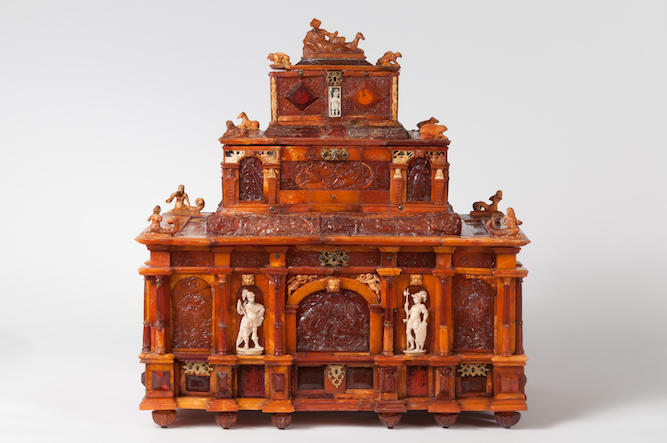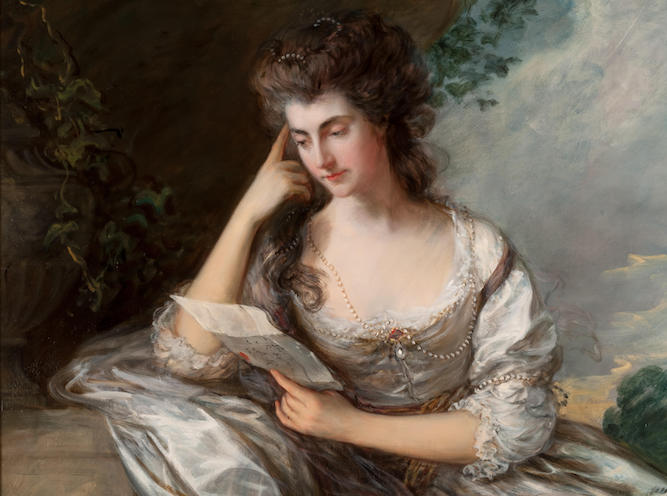
Collections reflections
Senior curator, Juliet Carey, reflects on being away from Waddesdon during lockdown and the objects that have stayed with her, providing comfort in these strange times.
For the last few weeks, working from home, I have been cut off from the collection at Waddesdon. Trying to get various projects into a fit state before my furlough begins, I have relied on our website and collections database and those of other museums and galleries, many of which are really splendid. Yet, none of these resources have been much use against the sadness of not being able to see things in real life.
It seems though that my mind has ways of helping out. Works of art that I love keep coming into my mind’s eye, uninvited but deeply welcome. They come not just as images, but as visual experiences more real and engaging than anything on screen or page. I am enjoying seeing which objects are best at reminding me they are there.
Three items from Waddesdon’s collection have been doing just this: the amber casket, made in what is now Kaliningrad, Thomas Gainsborough’s Mrs. John Douglas and Jan van der Heyden (and ?Adriaen van de Velde) Houses on the Herengracht. Listing them here, I realise that they reflect some of my anxieties in these frightening times but also console me at the same time.
The Amber Casket

Made to protect precious things, in fact it is already full of treasure, even before anything is locked in it. Several of the floors, walls and ceilings of the room-like compartments that make up the three floors of this quasi-architectural structure, are lined with low-relief sculpted panels depicting stories about the loves of the classical gods. The goddess Diana reclines on the top of the casket. Armed soldiers stand to attention in niches round the side. When the light comes through the translucent amber you see them as silhouettes, guarding everything inside.
Learn more about the amber casket>
Watch short film of the amber casket>
Thomas Gainsborough’s Mrs John Douglas

Mrs. Douglas has found a quiet spot beyond the boundaries of a formal garden. She sits beneath a rocky overhang where wild plants overgrow the plinth on which she leans. She is melancholy and reads a letter. We see her engaging through the letter with an absent loved one.
Discover more about Mrs Douglas>
Take a closer look with our virtual tour of the Red Drawing Room>
Jan van der Heyden’s Houses on the Herengracht

There are a few people on the Amsterdam street, talking, walking, working. The brickwork glows out against the green screen of trees that stops one seeing into all the windows. There is a strange discrepancy between the detail of the street and the painterly patterns that make up its (perhaps unfinished) reflection in the canal. This street is not much like the streets in north London, where I live, though there are a few people walking, working, talking, but always separated by at least two-metres. I know there are more behind the windows and, like in the painting, wish I could see in to their houses.
Read more about Houses on the Herengracht>
Discover more about Waddesdon’s Dutch Masters>
While you can look these works up on our website, it’s hard to apprehend their size, textures or how they relate to your body. Mrs Douglas, for example, is almost life size. Close up, she and the landscape in which she sits turn into brushstrokes, yet further back these resolve again into air and silk, pearls and skin. They come in and out of focus and the whole surface shimmers and shifts because you rarely stay quite still. I cannot see this on any screen, but find I can experience something of it in my mind’s eye.
These are the three works from Waddesdon that come most frequently into my head, but visual encounters from much longer ago jostle with them too. When I was little my father used to take me to Kenwood House, walking across Hampstead Heath, across the big lawn at the back of the house and up what seemed like a big hill, but now I know is just a little slope. We used to go and look at Stubbs’s Whistlejacket, which was on loan there for a bit and was unbelievably exciting – giant, at the end of the Orangery. There was also a special display of Gainsborough’s Countess Howe – I remember the painting displayed on an easel, but may remember that wrong. The room and the multiple high windows were integral to what I saw as a little girl and still part of what I remember now. Walking towards her through that long space made her seem to walk, although she was also pausing to be looked at. Quite opposite to that light-filled orangery was the dark little room at the National Gallery that protected the Leonardo cartoon. There, the setting made it wonderfully easy to immerse oneself in a single work of art. It was there until recently and I know I am not the only person for whom it was like a secular chapel. I remember my eyes getting used to the darkness until I could make out the thick edges of the papers, runkled in places and looking almost like skin. Having got to know the drawing as a child, I used to visit it as an adult in all kinds of sad and happy times and I can still see it, when needed, in my mind’s eye. Of course it still hangs in the National Gallery, but no longer on its own.
Only a few, very lucky curators are still able to go in and out of their galleries during the pandemic. I am not one of them. Being on the outside, reminds me how important it is to have the chance and the time to look slowly and in person at individual things and how sustaining that experience can be forever afterwards. When Whistlejacket was recently included in the (wonderful) Stubbs exhibition in Milton Keynes, I saw a boy of about 9 sitting in front of it, drawing it. His parents were sitting on a bench watching him draw and looking at the painting with him. They were there for the whole time that I was in the exhibition and still there when I left. I have no doubt that the picture will be an invigorating presence in their mind’s eyes during this lockdown.
What works of art are alive in your mind? I would love to read about them when I go back to work and when you come back to Waddesdon too.
Juliet Carey, Senior Curator, 30 April 2020






